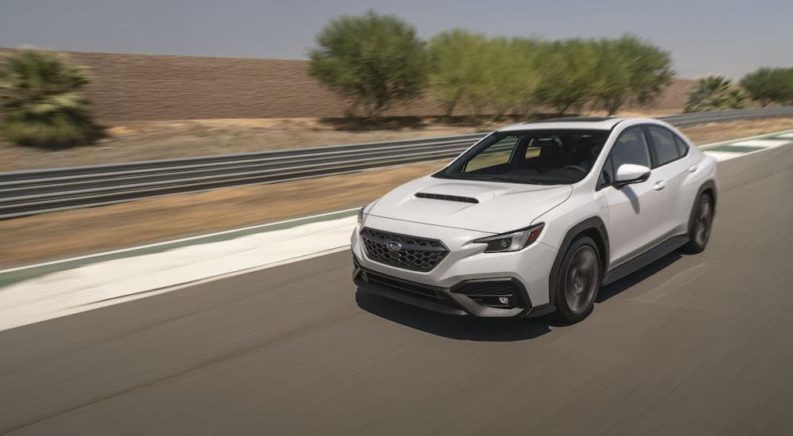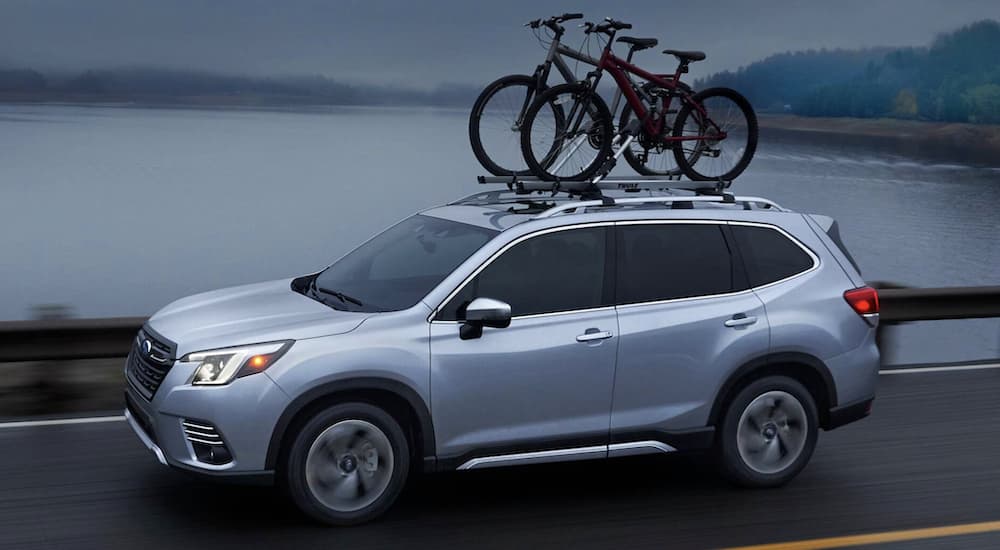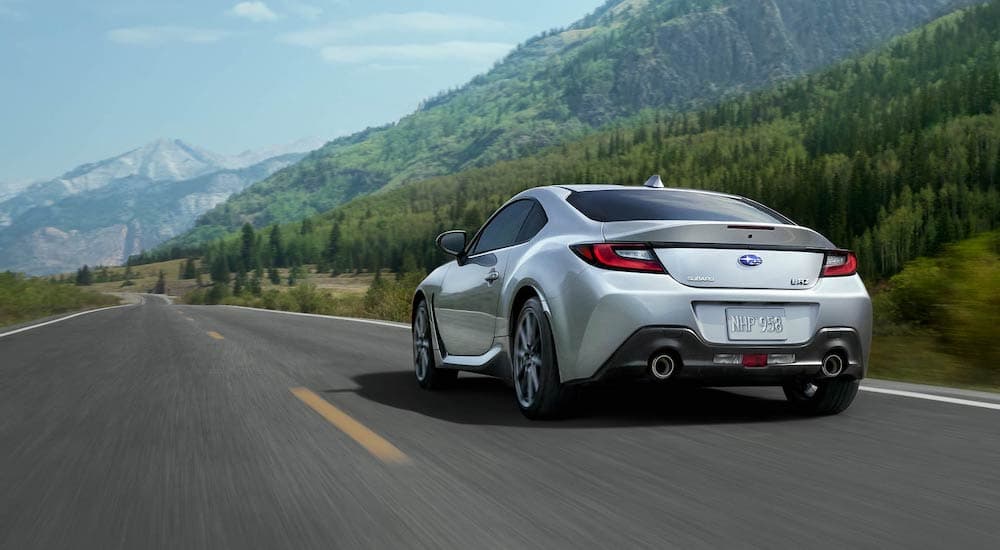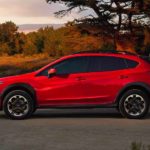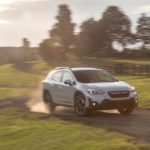You take a deep breath as you climb out of your current whip and slam the door. Maybe this is your first time here, although research suggests it probably isn’t, but either way, you know you’re in for a memorable experience when you walk through the entrance of your local Subaru dealer.
“Hello!” a voice calls out from the middle of the showroom, “How can I help you today?”
The bearded man stands up, plaid shirt tucked into blue jeans, and grabs a small object off his desk before coming to greet you. You look down at what you think is a business card, but are surprised to find that it’s styled after a license plate. It’s a beautiful forest green color, with a white “802” in the center of a white rectangle. You flip it over and read aloud, “Welcome to Vermont? But we’re in the Hudson River Valley!”
You really should have known better. The salesman laughs, “Didn’t you hear the news? Since January 1, 2022, all Subaru dealer lots are legally considered to be embassies of the state of Vermont!”
You share what you’re looking for from your next vehicle, and he dives into his pitch, sharing details about their current promotion—a starter set of bumper stickers popular with healthcare workers, hipsters, hippies, and hikers. The package is free of charge, with the only cost being a pledge that you’ll never drive faster than 5 below the speed limit for the first year (or, if your purchase is a WRX or BRZ, that you’ll swap the exhaust tips with gallon-sized paint cans within three weeks of delivery).
You wake up! It was just a dream. A breeze is blowing, birds are singing. You rise; there’s a lake nearby, surrounded by green mountains. Somebody drives up to the campsite, parks their Subaru next to yours, and gets out. You gasp—it’s your childhood tennis idol, Martina Navratilova! She doesn’t speak, but smiles and offers a knowing wink while she offloads her kayak into the water. It was never a dream—it’s a Subie thing!
A Rebranding Success Story
Subaru has had a presence in the US for decades, but has never enjoyed the same level of success as Toyota, Honda, or Nissan, who are firmly established as some of America’s most popular brands today. It was in the early 1990s that a struggling Subaru decided to lean into a specific brand image, abandoning ill-fated attempts at luxury cars to double down on their use of boxer engines and symmetrical all-wheel-drive drivetrains to make distinctive, practical, and versatile cars suitable for all drivers.
Around the same time, they decided to stop competing directly with the Big Everybody Else who was marketing solely to the white, male, 18-35-year-old demographic. They didn’t make cars that were just like Everybody Else’s, so why market to the same crowd? Subaru tried to find specific niches of the population who valued an AWD drivetrain over luxury features, flashy looks, and bottom-line pricing. In the process, they identified five groups of people who accounted for more than half of all Subaru sales: healthcare professionals, educators, IT professionals, outdoors enthusiasts, and women who identify as lesbian.
These findings led to a marketing campaign that specifically spoke to these groups—a 1990’s version of the targeted advertising we all face today whenever we speak in range of a Voice Assistant-enabled device. The advertisements that followed showed that, in the deepest snow, a Subaru would be the best car to count on to get you to work safely—where lives might be depending on you. No car or wagon could handle dirt trails with the confidence of an Outback thanks to its tall stance and AWD configuration, and the best way to “Get out, and stay out” was in a Forester with a vanity plate reading, “P-TOWN.”
The LGBTQ+ Connection
It appeared to Subaru market researchers that their appeal with the LGBTQ+ community came from their superb versatility, great practicality, and flashy-free styling. The cars were great for a low-key, active lifestyle that just happened to align with that of many lesbian women. What Subaru did with this information became far more significant than a targeted ad campaign. This was in the ’90s: the era of Don’t Ask, Don’t Tell, a time when Ellen DeGeneres lost a huge swathe of advertisers for coming out on her sitcom and IKEA faced a bomb threat for featuring a gay couple in an ad.
By producing an ad campaign with tongue-in-cheek and hidden messages that meant something to LGBTQ+ viewers—and absolutely nothing to straight viewers—Subaru managed to grab the attention of an underserved segment of the population without stoking overblown ire from conservative critics. But even when the critics threatened to boycott the brand, market researchers found that the threats came from people who had never driven a Subaru anyway!
Subaru executives eager to follow through on their plan to salvage the brand through niche marketing found their campaign to be a success, especially when it came to the LGBTQ+ community. The company’s support for organizations like pride events, the Rainbow Card, and establishing benefits for same-sex couples in their own employee base did not go unnoticed either. The impact of undertaking this ad campaign, engaging with organizations that supported the target community, and hiring tennis icon (and open lesbian) Martina Navratilova to appear in the ads—and doing so openly and consistently—made Subaru the nucleus around which marketing to this sector gained unstoppable momentum.
Of all the stereotypes people may have of Subaru cars and their drivers—many of which I delighted in poking fun at in the intro—the idea that Subaru is the brand for lesbians might be the most interesting because of this history. For one thing, it’s factually, statistically true, and for another, it was entirely and intentionally self-generated! They weren’t the first to openly market to the LGBTQ+ crowd, but how they did it helped to generate a transformation that continues to this day.
Keep Coming Back for More Subaru
Does it need to be said that this overall effort to salvage the Subaru nameplate through niche marketing was successful? Subaru might not be nearly as big as Toyota, but the brand has been absolutely thriving for years! Overall sales tell a huge story: From just over 200,000 US sales in 2009, they broke through 700,000 in 2020 and have doubled their market share. No carmaker besides Tesla has experienced faster growth this past decade!
It goes much deeper than pure growth, though. JD Power has only been running a brand loyalty study for three years now, which assesses what percentage of buyers stick with the same brand when trading in a vehicle. Subaru has been at the top every single year. 61.8% of Subaru drivers who traded in their car in 2020 got themselves another Subaru—compare that to fewer than 15% of Chrysler owners, or just over 60% of Toyota owners (the second-place brand on the list)! A contingent of LGBTQ+ buyers makes up a significant portion of this loyal bunch, with LGBTQ+ organizations that partner with Subaru consistently bringing in the lion’s share of buyers who come to the brand through their promotions. Beyond that, it’s probably the appeal to specific niches that keeps most buyers coming back for more; every time they trade in a car, they find that the best new car for their needs is still another Subie!
It certainly doesn’t hurt that Subaru stokes those interests with their own outreach efforts. Subaru engenders a sense of loyalty through personal investment in the brand by connecting with their customers, keeping them talking about Subaru and feeling like their feedback matters. Specific initiatives such as Subaru Ambassadors—fans recruited to talk about their cars and promote the brand in exchange for Subaru swag—and the MeetAnOwner content site (where over 100 owners share their personal Subaru experiences and chat with people who reach out to talk about all things Subie) are only two examples. Subaru displays a strong spirit of treating car ownership as a two-way relationship.
The company has fully embraced social media to maximize the reach of programs like these. Engagement Labs, a data and analytics firm, has Subaru 5th among all manufacturers in TotalSocial ranking, a measure of the social media influence that brands seem to wield. That’s up 8 spots from the previous study, indicating that opinions about Subaru are only getting better and their presence is only growing stronger! What’s more, Reputation.com’s annual brand reputation survey gave Subaru a score of 669 out of 1000—3% better than the year before, and 3rd among all auto manufacturers behind only Nissan and Lexus (681 and 673, respectively)!
So, stereotypes be damned, people just really like the Subaru brand in general. Sure, if you’ve ever heard of head gaskets, it’s probably in relation to a quality issue that haunted early-‘10’s Subarus like a poltergeist as they approached 100,000 miles, so you might worry a bit about longevity. However, while it’s true that other brands are scoring better on long-term quality these days, it’s also true that Subaru is one of today’s most highly recommended manufacturers—it’s Consumer Reports’ only member of the “much better than average” club with a score of 81/100 on their 2022 Brand Report Card!
What’s more is that their mid-size crossover, the Subaru Forester, has reigned for 9 straight years as Consumer Reports’ top pick in its class, despite stiff competition from every other major manufacturer in the industry’s biggest segment. Simply put, this brand that gets significantly outsold by the Ford F-150 is punching way above its weight—at least in terms of initial value, quality, and overall driver satisfaction.
Far from a Gimmick
Subaru has been a niche market brand for a long time, since they successfully reinvented themselves as one with dedicated marketing and focused design language in the mid-1990s. Several stereotypes have emerged about the brand, related to the niches that adore their Subarus, but it isn’t all bad; some of them are downright wholesome, with the affinity that LGBTQ+ drivers have for the brand inspiring a cultural shift in mass marketing practices. Leaning into that brand image and engaging with their biggest fans has changed everything for Subaru.
Personally, that fact about the Forester was the most surprising thing I learned while researching this piece, and my overall perception of the brand has been seriously elevated by what I’ve found. So sure, your buddies might joke that you’ve taped over the part of the speedometer past 60 mph, or that you’re embracing your inner school teacher, but the truth is that there’s little downside to the Subaru brand these days—and features like standard AWD are definite upsides. Yeah, not everybody’s going to understand that—or see the upsides as worthwhile trade-offs—but that’s okay. That’s kind of the point; it’s a Subie thing.

